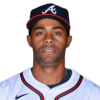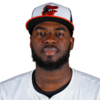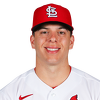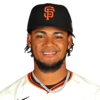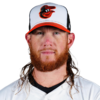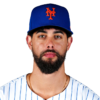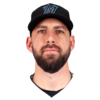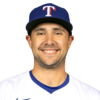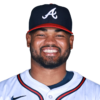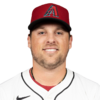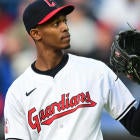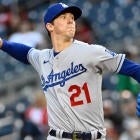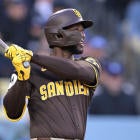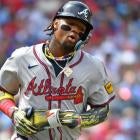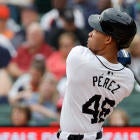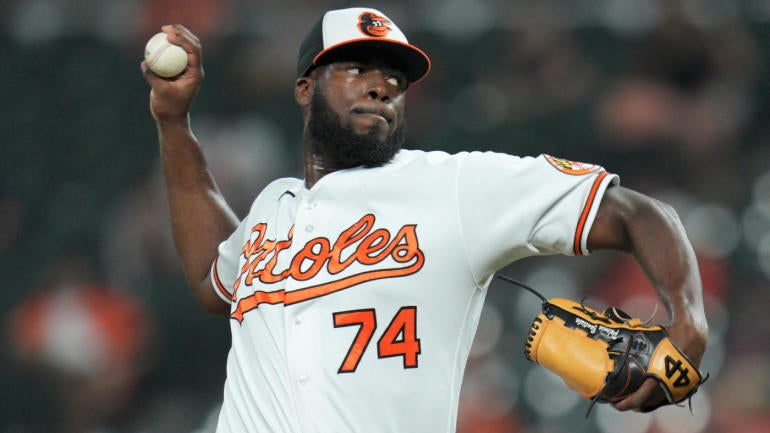
Finally, we arrive at a position whose outlook is in no way impacted by the end of the juiced ball era.
But that doesn't mean it's stagnant. No, relief pitcher has been transformed for completely different reasons -- strategic ones, not environmental. It seems more and more managers have come to embrace the wholly nerdy concept of the closer committee.
Took them long enough -- so long, in fact, that the term "closer committee" has fallen out of fashion. The operative word now is "leverage." Most every bullpen still has a lead dog. It's just that the lead dog only comes off his leash in the highest-leverage situations, which don't always come in the ninth inning.
For baseball, it's a step forward, but for Fantasy Baseball, it's a nightmare. In all but a few cases, a reliever's worth is entirely tied to his save total. Predictability is paramount. Even before this trend toward closer committees, the amount of turnover at relief pitcher sometimes made for a hair-raising experience. Now, it's just impossible to keep up. If a guy gets passed over for a couple save chances in a row, it may mean something, but it may mean nothing. You'll be left to wonder time and time again, paralyzed by the fickleness of it all as you slip further and further behind in the saves category.
Or ... you could invest in one of the few remaining relievers who are still locked in as a true closer. By my count, there are 11. There may turn out to be more if others become more solid in the role. There may turn out to be fewer if some of those 10 fall apart, as relievers are wont to do.
Now ... at the end of the day, saves are just one category, so the impact of a reliever is still lower than that of any other position. As such, saves volatility can have too much sway, like when it's pushing the best relievers up to Round 2. Ridiculous. While only 10 relievers made it to 30 saves last year, another eight made it to 20. You can still cobble together a league-winning save total from part-time closers and bad ones who eventually lose the role. It may take some elbow grease and a close eye on the waiver wire, but ultimately, it gives your team a higher ceiling by allowing you to invest less in that one little category.
Of course, I'm talking primarily about Rotisserie leagues. If you play in a standard Head-to-Head points league -- or any other that offers teams only two relief pitcher spots -- the scarcity here isn't nearly so oppressive. I might wait until my last two picks to fill those spots in such a format, trusting the waiver wire to meet any needs that arise.
Because the strategy there is so much more straightforward, I'll mostly tailor my analysis here for Rotisserie leagues.
| 2023 ADP | 2022 ERA | 2022 WHIP | 2022 K/9 | |
|---|---|---|---|---|
Edwin Diaz
NYM RP
| 41 | 1.31 | 0.84 | 17.1 |
Emmanuel Clase
CLE RP
| 43 | 1.36 | 0.73 | 9.5 |
Josh Hader
SD RP
| 57 | 5.22 | 1.28 | 14.6 |
Devin Williams
MIL RP
| 68 | 1.93 | 1.01 | 14.2 |
Jordan Romano
TOR RP
| 73 | 2.11 | 1.02 | 10.3 |
Ryan Pressly
HOU RP
| 85 | 2.98 | 0.89 | 12.1 |
Raisel Iglesias
ATL RP
| 93 | 2.47 | 0.97 | 11.3 |
Felix Bautista
BAL RP
| 102 | 2.19 | 0.93 | 12.1 |
Kenley Jansen
BOS RP
| 104 | 3.38 | 1.05 | 12.0 |
David Bednar
PIT RP
| 154 | 2.61 | 1.12 | 12.0 |
Daniel Bard
COL RP
| 157 | 1.79 | 0.99 | 10.3 |
After 15 years of staking my reputation on never paying for saves, I've finally come to the conclusion that I need to invest in one of these guys (again, not true in Head-to-Head points leagues). I'm not saying it'll be one of the top guys. Maybe if Edwin Diaz or Emmanuel Clase slips to Round 5, I would think about it, but I'd still probably pass. It's just so critical to fill the scarcest hitting positions at that point in the draft, and there are always nobodies who end up making a major contribution in the saves category.
Still, playing catch-up in saves can be brutal if you don't have that firm foundation of 30-plus, and the peace of mind offered by this group is probably worth it in most cases. I'll point out that they're not all on equal footing. The two outliers by ADP are David Bednar and Daniel Bard, who I've opted to include because there really are no closer alternatives for their respective teams. But those teams are bad, and the pitchers' talents are questionable, making them the most likely of this group to underwhelm or fizzle out completely. So when I say I need one of these relievers, I really mean other than those two.
The best bang-for-your-buck options are Raisel Iglesias and Felix Bautista, both of whom I actually like more than Jordan Romano and Ryan Pressly. Romano can struggle with consistency and Pressly with health. Iglesias has a rock solid reputation in the closer role, and Bautista looked like the next closer star after the Orioles traded away Jorge Lopez at the deadline last year.
| 2023 ADP | 2022 ERA | 2022 WHIP | 2022 K/9 | |
|---|---|---|---|---|
Ryan Helsley
STL RP
| 100 | 1.25 | 0.74 | 13.1 |
Camilo Doval
SF RP
| 111 | 2.53 | 1.24 | 10.6 |
Clay Holmes
NYY RP
| 156 | 2.54 | 1.02 | 9.2 |
Scott Barlow
KC RP
| 158 | 2.18 | 1.00 | 9.3 |
Alexis Diaz
CIN RP
| 184 | 1.84 | 0.96 | 11.7 |
Paul Sewald
SEA RP
| 200 | 2.67 | 0.77 | 10.1 |
Craig Kimbrel
PHI RP
| 263 | 3.75 | 1.32 | 10.8 |
You'll notice the ADP for Ryan Helsley and Camilo Doval is higher than that of David Bednar and Daniel Bard from the previous group. It makes sense. Their best-case scenarios are better. But nonetheless, they have more competition for saves. Helsley, despite his eye-popping velocity and ratios, couldn't completely shake off Giovanny Gallegos last year, and while Doval was more like a true closer for the Giants, Taylor Rogers is in the mix now. And historically, manager Gabe Kapler has preferred a committee.
Given how small this group is, I'm most likely going to grab only one. If I can get Bednar or Bard -- who, again, go in the same range as Clay Holmes and Scott Barlow -- even better. Holmes and Barlow themselves are fine and the obvious front-runners for their respective teams, but Holmes collapsed in the second half while Barlow now faces the threat of Aroldis Chapman, however diminished his skills might be. My favorite after Bednar and Bard are gone is Alexis Diaz, little brother of Edwin Diaz, who was far and away the Reds' best reliever last year. David Bell hasn't been the most dependable manager with these decisions, though.
Paul Sewald would be a surefire stud if not for the threat of Andres Munoz and the whims of manager Scott Servais. Craig Kimbrel, meanwhile, is the scariest of this group, but given his history in the role, you know he'll get the first crack with the Phillies. His stuff still rates highly, if nothing else.
| 2023 ADP | 2022 ERA | 2022 WHIP | 2022 K/9 | |
|---|---|---|---|---|
Jhoan Duran
MIN RP
| 183 | 1.86 | 0.98 | 11.8 |
Peter Fairbanks
TB RP
| 223 | 1.12 | 0.67 | 14.3 |
Jose Leclerc
TEX RP
| 245 | 2.83 | 1.13 | 10.2 |
Dylan Floro
MIA RP
| 286 | 3.02 | 1.17 | 8.1 |
Kyle Finnegan
WAS RP
| 291 | 3.51 | 1.14 | 9.5 |
Kendall Graveman
CHW RP
| 321 | 3.19 | 1.40 | 9.1 |
Alex Lange
DET RP
| 326 | 3.69 | 1.25 | 11.7 |
Daniel Hudson
LAD RP
| 332 | 2.22 | 0.90 | 11.1 |
Carlos Estevez
LAA RP
| 344 | 3.47 | 1.18 | 8.5 |
Trevor May
OAK RP
| 372 | 5.04 | 1.44 | 10.8 |
Brandon Hughes
CHC RP
| 398 | 3.12 | 1.09 | 10.6 |
Mark Melancon
ARI RP
| 431 | 4.66 | 1.50 | 5.6 |
There's a lot of guesswork happening here. For the remaining teams, 12 in all, I've picked who I think is the front-runner for saves, but in some cases, it's with the thinnest reasoning.
The standouts here are clearly Jhoan Duran and Peter Fairbanks, and you'll have to pay a little extra for them. I generally try to grab one, though, because they're equipped to be stud closers if they'd only get the chance. The Twins and Rays are two of the most reluctant teams to anoint a closer, but even if it never happens, you can trust that Duran and Fairbanks will at least be part of the mix.
Otherwise ... woof. These are the kind of relievers you draft if you're looking for a Hail Mary late. Sometimes a bad closer can deliver a big save total, as happened with Gregory Soto last year. Sometimes he can even become good, as happened with Daniel Bard. The one who I think has the clearest claim to the job is Alex Lange. The one who I think has the most upside is Daniel Hudson ... or whomever ultimately claims the job for the Dodgers. I get the impression that organization has been aching to play the leverage game, though, so a committee seems likely.
| 2023 ADP | 2022 ERA | 2022 WHIP | 2022 K/9 | |
|---|---|---|---|---|
Andres Munoz
SEA RP
| 203 | 2.49 | 0.89 | 13.3 |
Jorge Lopez
MIN RP
| 259 | 2.54 | 1.18 | 9.1 |
Evan Phillips
LAD RP
| 264 | 1.14 | 0.76 | 11.0 |
Seranthony Dominguez
PHI RP
| 275 | 3.00 | 1.14 | 10.8 |
Aroldis Chapman
KC RP
| 288 | 4.46 | 1.43 | 10.7 |
Giovanny Gallegos
STL RP
| 294 | 3.05 | 1.02 | 11.1 |
Jason Adam
TB RP
| 350 | 1.56 | 0.76 | 10.7 |
Jimmy Herget
LAA RP
| 352 | 2.48 | 0.91 | 8.2 |
Brusdar Graterol
LAD RP
| 411 | 3.26 | 0.99 | 7.8 |
Taylor Rogers
SF RP
| 413 | 4.76 | 1.18 | 11.8 |
Matt Barnes
MIA RP
| 499 | 4.31 | 1.44 | 7.7 |
Brock Burke
TEX RP
| 512 | 1.97 | 1.06 | 9.8 |
Brad Boxberger
CHC RP
| 573 | 2.95 | 1.23 | 9.6 |
Reynaldo Lopez
CHW RP
| 615 | 2.75 | 0.95 | 8.7 |
Kevin Ginkel
ARI RP
| 633 | 3.38 | 1.30 | 9.2 |
Jonathan Hernandez
TEX RP
| 641 | 2.97 | 1.42 | 8.0 |
Dany Jimenez
OAK RP
| 672 | 3.41 | 1.19 | 8.9 |
Hunter Harvey
WAS RP
| 687 | 2.52 | 1.14 | 10.3 |
Zach Jackson
OAK RP
| 688 | 3.00 | 1.27 | 12.6 |
It's hysterical to me that Andres Munoz is the reliever who Fantasy Baseballers are desperate to see become a closer, because that guy last year was ... well, the one he'd be replacing, Paul Sewald. They're both incredible, which is why I get the feeling neither will be able to shake off the other completely. 'Tis a shame.
Evan Phillips was clearly the Dodgers' best reliever last year, and he's the one I'm hoping will eventually claim the job. But it's not like he had dibs on the ninth inning when Craig Kimbrel was ousted from the role late last year, so I'm skeptical. For what it's worth, Brusdar Graterol would be a solid choice, too.
Jorge Lopez, Seranthony Dominguez and Aroldis Chapman are legitimate threats to Jhoan Duran, Kimbrel and Scott Barlow, respectively. Giovanny Gallegos, Jason Adam and Taylor Rogers could cut into Ryan Helsley's, Peter Fairbanks' and Camilo Doval's save chances, but it's doubtful any of them claims the closer role outright. The rest here are additional contenders for the Angels, Marlins, Rangers, Cubs, White Sox, Diamondbacks, Athletics and Nationals, but they're not any more inspiring than the names from the previous list.
| 2023 ADP | 2022 ERA | 2022 WHIP | 2022 K/9 | |
|---|---|---|---|---|
Spencer Strider
ATL SP
| 35 | 2.67 | 0.99 | 13.8 |
Hunter Brown
HOU RP
| 234 | 0.89 | 1.08 | 9.7 |
Garrett Whitlock
BOS RP
| 329 | 3.45 | 1.02 | 9.4 |
Yusei Kikuchi
TOR SP
| 343 | 5.18 | 1.50 | 11.1 |
DL Hall
BAL RP
| 536 | 5.93 | 1.68 | 12.5 |
Would you look at that difference in ADP between No. 1 and No. 2? Magnificent.
Suffice it to say Spencer Strider is the only SPARP who'll be universally drafted this year. For the uninitiated, SPARP stands for "starting pitcher as relief pitcher" and refers to starting pitchers with relief pitcher eligibility. They're most in demand in points leagues, where volume is rewarded over efficiency, allowing a good starting pitcher to outscore a good closer most of the time.
But the operative word there is good, and for the rest of these, the jury's still out in that regard. By now, we have pretty good indication that Yusei Kikuchi is not good. I have high hopes for Hunter Brown, but he probably won't have a rotation spot to begin the year. It sounds like Garrett Whitlock will, but his stuff played down in his starting opportunities last year, which led to middling results. He's not a bad gamble late in a points league, but he shouldn't be a high priority either.













